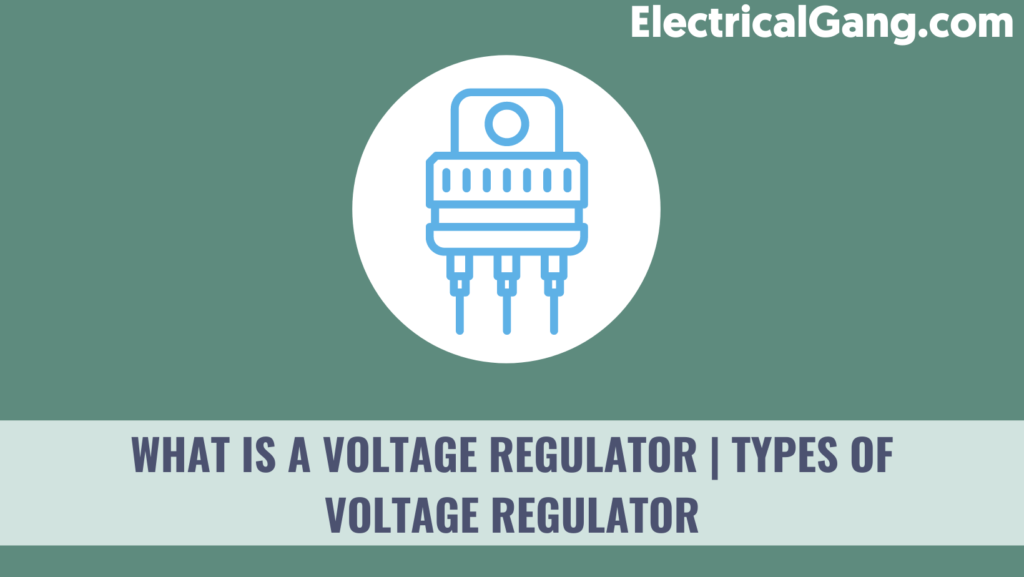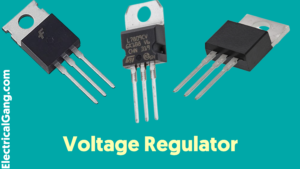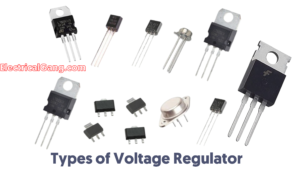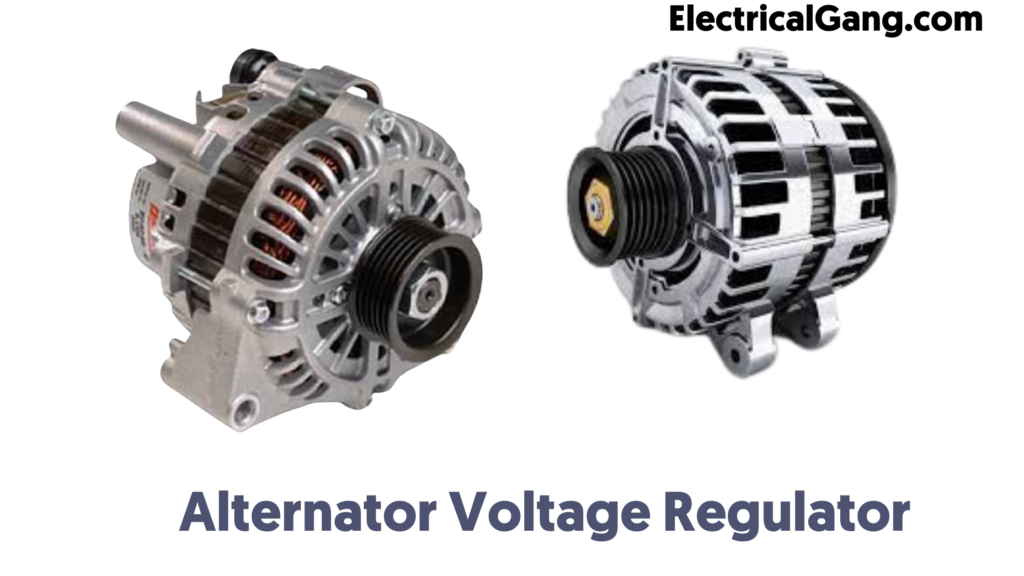
The voltage regulator has an important role to play in the supply of electricity. That is why before we discuss voltage regulators, we have to look at the role of the power supply before designing any system. For example, in any operating system, such as a mobile, wristwatch, computer, laptop, etc., the power supply is an essential part of the work of the Owl system.
As it provides a reliable and uninterrupted supply to the interior of the system. The power supply is an electronic device that provides stability and regulatory power for the circuit to work properly. There are two types of power supply sources. Such as AC power which is received from the main outlet, and DC power which we get from the battery.
There are two main types of voltage regulators: linear and switching. Both types regulate a system’s voltage, but linear regulators operate with low efficiency, and switching regulators operate with high efficiency.
In today’s article, we will discuss the Voltage Regulator, the types of Voltage regulators, and an overview of its work.
What is a Voltage Regulator?

A voltage Regulator is used to control the voltage level. Voltage regulators are used when there is a need for a stable and reliable voltage. It generates a fixed output voltage, which remains constant for any changes in input voltage or load conditions. It also acts as a buffer to protect any component from damage.
A Voltage regulator is a device with a simple feed-forward design. And this uses a negative feedback control loop. A Voltage Regulator is a device with a simple feed-forward design. And this uses a negative feedback control loop. There are two main types of Voltage regulators: linear voltage regulators and switching voltage regulators. These are used in a wide range of applications. A linear voltage regulator is the simplest type of voltage regulator. It is available in two types: compact and used in low power and low voltage systems.
The components used in the voltage Regulator are as follows:
- Feedback circuit.
- Static reference voltage.
- Pass Element Control Circuit.
The voltage regulation process is simplified using the three components outlined above. The first component of a voltage regulator, such as a feedback circuit, is used to detect a change within the DC voltage output. Depending on the reference voltage and feedback, the control signal can be generated and run a pass element to pay for the changes.
The pass element here is a type of solid-state semiconductor device similar to a BJT transistor, PN-junction diode, or MOSFET. Now, the DC output voltage can be kept almost constant.
Suggeted Read: Types of Losses in a Transformer | Efficiency of Transformer
Working of Voltage Regulator:
The Voltage Regulator circuit is used to generate and maintain a permanent output voltage even if the input voltage or load condition is changed in any way. The voltage regulator receives voltage from the power supply and can be maintained in range, which is well compatible with the rest of the electrical components. Mostly these regulators are used to convert DC/DC power, AC/AC, or AC/DC.
Types of Voltage Regulators:

This regulator can be applied by integrated circuits or independent component circuits. Voltage Regulators are classified into two types linear voltage regulators and switching voltage regulators.
This regulator is typically used to control the system voltage. However, linear regulators work with low efficiency as well as with switching regulators, which work with high efficiency. In the switching of a high-efficiency regulator, most of the input power can be transmitted to the output without waste.
There are two main types of Voltage regulators Which are as follows :
#1. Linear voltage regulator.
#2. Switching voltage regulator.
There are two types of linear voltage regulators; one is in series, and the other is a shunt.
There are three types of switching voltage regulators which are something like step-up, step-down, and inverter voltage regulators.
#1. Linear Voltage Regulators:
This Voltage regulator acts as a Voltage divider. In the ohmic field, it uses FET. The resistance of this voltage regulator varies with the load. Consequently, the constant output voltage linear voltage regulators are the basic type of regulators for regulating the power supply. In such regulators, the transformation of the active pass element, such as MOSFET or BJT, is responsible for changing the shear conductivity output voltage.
Once connected to the load, any input changes or the current across the transistor will vary to maintain the load output. To change the current of the transistor, it must operate in the active otherwise ohmic region.
This type of regulator loses a lot of power during this process. This is because, inside the transistor, the net voltage is dropped to destroy it like heat. In general, these regulators are classified into different categories.
- Positively adjustable.
- Negative adjustable.
- Tracking.
- Floating.
- Fixed output.
Advantages of Linear Voltage Regulator:
The advantages of linear voltage regulators are as follows:
- Quick response time for load or line change.
- Low electromagnetic interference and low noise.
- The lower output gives a ripple voltage.
Disadvantages of Linear Voltage Regulator:
The disadvantages of linear voltage regulators are as follows:
- More space is needed. A heatsink is required.
- Efficiency is very low.
- The voltage above the input cannot be increased.
#1.1. Series Voltage Regulators:
Series Voltage Regulators use a variable element placed in the series with the load. The voltage across it can change the resistance of the element in that series, and the voltage across the load remains constant.
The current drawn quantity is used effectively by the load. This series is the main advantage of the Voltage regulator. While the load requires no current, the series voltage regulator does not draw a full current. The series regulator is significantly more efficient compared to the same shunt regulator.
#1.2. Shunt Voltage Regulators:
This voltage regulator works by providing a passage on the ground from the voltage given by the variable resistance. The current flows away from the load through this regulator and unnecessarily to the ground. This makes the form generally less efficient than the range regulator.
Although it is very simple, sometimes only a voltage-reference diode is involved, and it is used in very low-power circuits whose waste current is very worrying. This form is very common for voltage reference circuits. The shunt regulator usually simply sinks (absorbs) the current.
Applications of Shunt Regulators:
The application of the Shunt Regulator is as follows:
- Current source and sink circuits.
- For voltage monitoring.
- Accuracy current limits.
- Analog and digital circuits that require precision references.
- Error amplifiers.
- The adjustable voltage or current linear and switching power supply.
- Low output voltage switching power supply.
Suggested Read: What Is a Solenoid Coil | Working Principle of Solenoid Coil
#2. Switching Voltage Regulators:
A switching regulator can turn a series device on and off with speed. The function of a switch is to set the amount of charge transferred to the load. The same reaction mechanism as the linear regulator controls this.
The switching regulator is efficient because the series element runs either perfectly. Or off because it dissipates almost no power. The switching regulator is capable of generating an output voltage. Which, in contrast to linear regulators, is higher than the input voltage or anti-polarity.
The switching voltage is quickly turned on and off to change the regulator output. An oscillator is needed to control it and also charge the storage components. Pulse rate modulation varies with the continuous duty cycle and noise spectrum imposed by the PRM in the switching regulator with different frequencies; That sound is more difficult to filter.
Pulse width modulation switching with a constant frequency different duty cycle is efficient and easily filters the regulator noise. Turning on a continuous mode by the inductor in the switching regulator allows the highest output power to never reach zero. It gives better performance. The uninterrupted mode current through the inductor in the switching regulator comes to zero. It performs better when the output current is low.
Switching Topologies:
There are two types of switching topologies one is dielectric isolation, and the other is non-isolation.
Isolated:
This depends on radiation and intense weather. Again these converters are classified into two types which include the following.
- Flyback converter.
- Forward converter.
Both these converters mentioned above are discussed in detail in the SMPS article.
Non –Isolation
This depends on the small change in Vout/Vin. For example, step-up voltage is the regulator. It increases the input voltage while the step down decreases the input voltage. The Step-up/step-down voltage regulator reduces, increases, or reverses the input voltage depending on the controller. The charge pump provides a lot of input, even without using an inductor.
Again these Non-Isolation Converters are classified into three types which are as under.
- Buck Converter or Step-down Voltage Regulator.
- Boost Converter or Step-up Voltage Regulator.
- Buck or Boost Converter.
Advantages of Switching Topologies:
The main advantages of Switching Topologies are efficiency, size, and weight. This is also due to its intricate design, which can handle high power efficiency. The switching voltage regulator can provide an output that is more or less than the one that changes the input voltage.
Disadvantages of Switching Topologies:
The disadvantages of Switching Topologies are as follows:
- For one, the cost is much higher.
- High output ripple voltage.
- Slow transient recovery time.
- EMI produces a very noisy output.
Suggested Read: Difference Between Step-up And Step-Down Transformer
#3. Step-up (Boost) Voltage Regulator:

A step-up switching converter is also known as a boost switching regulator. The input voltage is increased, and a higher output voltage is obtained. The output voltage can be controlled as long as the power is drawn as long as it is in the output power specification of the circuit. A step-up switching voltage regulator is used to drive the driving wire of the LED.
Suppose losses are Pin = Pout (input and output power are equal).
Then Vin Iin = Vout Iout, Iout/Iin = (1-D)
The following can be inferred from this:
- Power remains the same.
- Voltage increases.
- The current decreases.
- The DC transformer is the same.
#4. Step Down (Buck) Voltage Regulator:

Step Down (Buck) The function of the Voltage Regulator is to reduce the input voltage
If the given power is equal to the output power
Pin = Pout; Vin Iin = Vout Iout, Iout / Iin = Vin /Vout = 1/D
A step-down converter is the equivalent of a DC transformer with a turn ratio of 0-1.
#5. Step Up/Step Down (Boost/Buck):

This is also known as a voltage inverter. Thus using the configuration, the voltage can be reduced or increased as required.
- The output voltage is the opposite polarity of the input.
- V.L. Forward-biasing is achieved during this period by a reverse-biased diode, generating current and charging the capacitor for voltage output during the off time.
- Using this type of switching regulator, 90% efficiency can be achieved.
Alternator Voltage Regulators:

It produces the current required to meet the electrical demand of the vehicle while the engine is running. This produces the energy that is used to start the vehicle. An alternator has the ability to generate even more current at a lower speed compared to a DC generator, which was used by most vehicles at one time. The alternator has two parts.
Stator: This is a stationary component that has no moving part and has a set of wound electrical conductors in the coil inside the stator.
Rotor: This is a moving component that produces a rotating magnetic field in any of the following three ways: (i) Induction, (ii) Permanent magnet, (iii) Using an exciter.
Electronic Voltage Regulator:
A simple voltage regulator can be made from a diode or a resistor in series with a diode. Due to the logarithmic shape of the diode V-i curves, the voltage around the diode changes slightly due to changes in the current drawn or changes in the input. This design can work exactly when precision voltage control and efficiency are unimportant.
Transistor Voltage Regulator:
The electronic voltage regulator has a volatile voltage reference source, which Zanor Diode provides. Also known as reverse breakdown voltage operating diode. It maintains a constant DC output voltage. The AC ripple voltage is blocked, but the filter cannot be blocked. The Voltage Regulator also has short circuit protection and additional circuits for the current limiting circuits, over-voltage protection, and thermal shutdown.
Basic Parameters of Voltage Regulators:
The basic parameters that need to be considered when operating a voltage regulator mainly include input voltage, output voltage as well as output current. In general, all of these criteria are used primarily to determine if the VR-type topology matches the user’s IC well.
Other parameters of this regulator are switching frequency and quiet current; The feedback voltage can be applied depending on the thermal resistance requirement. Once efficiency is the main concern in standby modes or light load, the quiet current is significant.
Once the switching frequency is considered as a parameter, absorbing the switching frequency can lead to smaller system solutions. Also, the thermal resistance can be dangerous to get rid of heat from the device and dissipate heat from the system.
If the carrier has a MOSFET, then all the carriers, as well as the dynamic damage, will end up in the package. And must be considered once to measure the extreme temperature of the regulator.
The most important full result is the feedback voltage, as it has IC, which determines the low output voltage. This restricts the low O/P voltage, and the accuracy will affect the regulation of the output voltage.
Application of Voltage Regulators:
The application of the Voltage regulator is as follows:
- As an automobile alternator.
- As a power station generator plant.
- As a power distribution system.
- As a computer power supply.
Most Commonly Asked Questions:

How many types of voltage regulators are there?
| Sr. No. | Voltage Regulator Types |
| 1 | Linear voltage regulator |
| 2 | Switching voltage regulator |
AC Voltage Regulator Types:
The following are the types of ac voltage regulators:
| Sr. No. | Voltage Regulator Types |
| 1 | Linear voltage regulator |
| 2 | Switching voltage regulator |
Like this post? Share it with your friends!
Suggested Read –